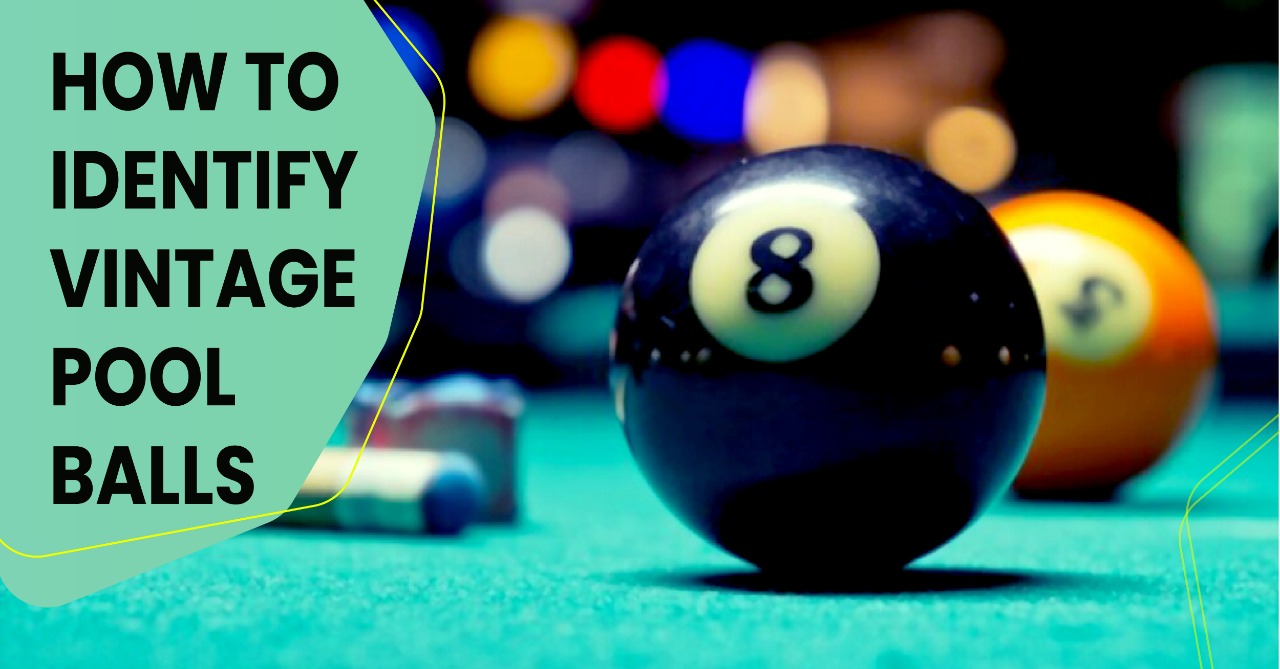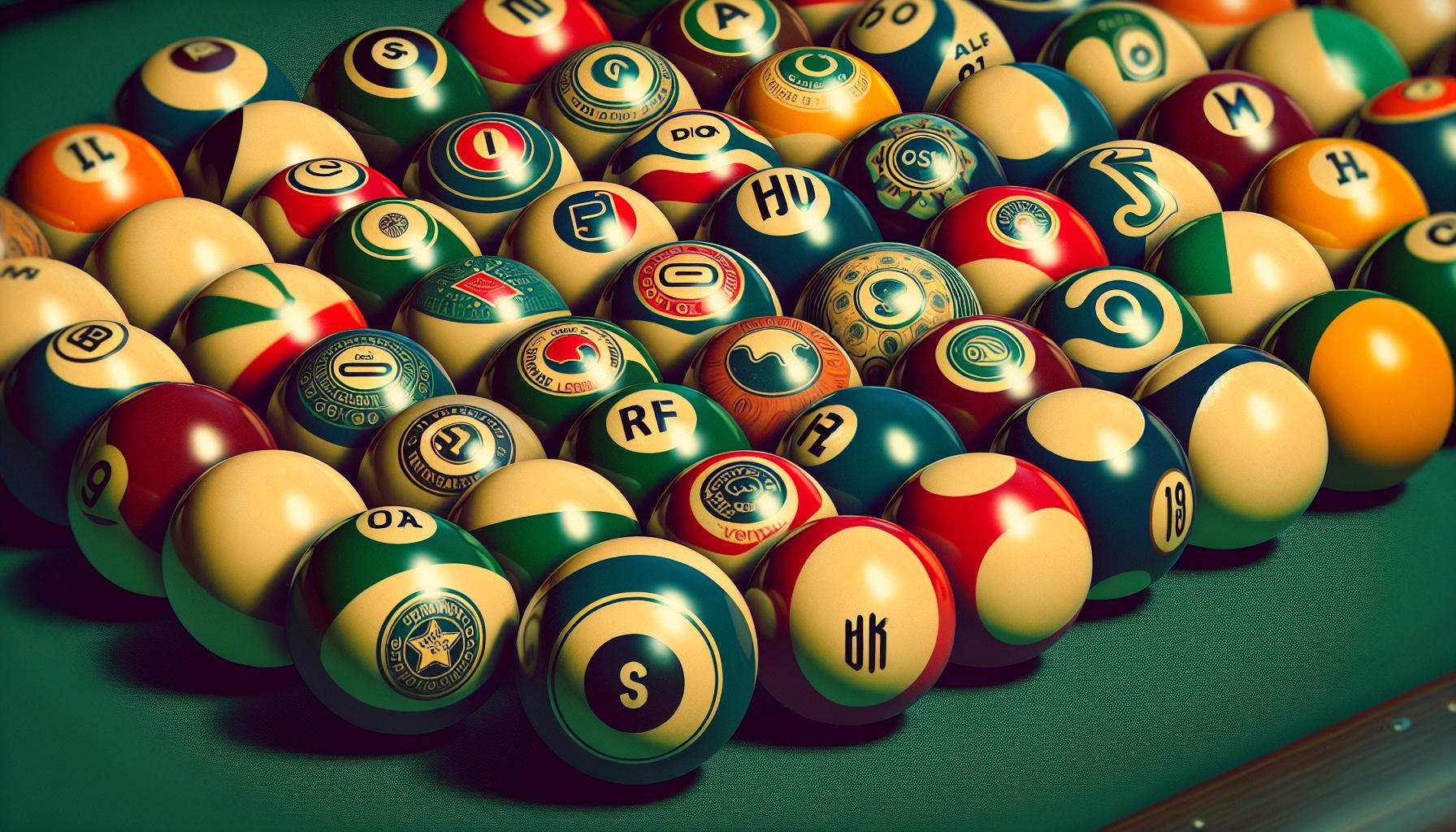Vintage Pool Balls: How To Identify & Value These Collectibles
Ever wondered if that set of pool balls you found at a flea market is a hidden treasure? Unlocking the secrets of vintage pool balls is more than just a hobby; it's a journey into a rich history, where craftsmanship and materials tell tales of a bygone era, and where the value can be surprisingly significant.
The world of antique pool balls is a fascinating blend of artistry, history, and the thrill of discovery. From the materials used to the manufacturing techniques employed, each set tells a unique story. But how does one begin to unravel the mysteries of these collectibles? The process, thankfully, is not as daunting as one might think.
One of the first aspects to consider when identifying vintage pool balls is the size. Contrary to modern pool balls, which are standardized, vintage balls can vary. If the balls you are inspecting are the same dimensions as contemporary ones, they are unlikely to be vintage. Modern pool balls typically have a diameter of around 2.25 inches. Vintage balls, however, might be slightly smaller.
The material from which the balls are made is another crucial factor. The earliest pool balls were often crafted from ivory, a material that has long since been replaced due to scarcity and ethical concerns. Ivory pool balls are now highly sought after by collectors, but identifying them requires a keen eye. These balls have a distinct feel and appearance. However, due to the rarity of ivory, many vintage balls were later made using phenolic resin, a durable synthetic material. This resin is still used in the production of modern pool balls.
The design and numbering of vintage pool balls offer further clues to their age. The styles and fonts used in the numbering have evolved over time. Examining the details of the numerals, the fonts employed, and the overall design aesthetic can help narrow down the era in which the balls were manufactured. Certain manufacturers used distinctive markings or logos on their products, which can aid in identification. The presence of specific manufacturer marks on the ball is another point of interest for any collector.
Phenolic resin balls were produced by leaving out the white phenolic resin rod (dowel) around which the malleable colored phenolic resin was injected into the mold, resulting in solid colored balls.
It is important to assess the wear and patina on the pool balls. The wear can provide valuable insights into the ball's age and use. Scratches, chips, or discoloration can all serve as indicators of the ball's journey through time. The presence of a unique patina, caused by years of handling and use, is often a sign of authenticity and can significantly increase a ball's collectibility.
In identifying ivory pool balls, certain techniques can be useful. Evaluating the balls weight and size is an important step. Vintage pool balls typically weigh between 5.5 to 6 ounces and often measure around 2.25 inches in diameter. Standard pool balls tend to have consistent weight and size.
The "ivorylene darted balls" were a popular design, paving the way for the "Centennial" balls, which used phenolic resin and featured a new design, as the dart was not possible with the newer materials.
In the world of pool balls, materials have changed over time. Initially, they were made from wood, stone, and ivory. However, issues with ivory led to the use of celluloid balls. Celluloid, however, posed safety concerns, especially if they came into contact with sources of heat. Eventually, synthetic materials like phenolic resin became the standard, offering durability and consistency.
The age of the balls is an essential point. If the pool balls are less than 50 years old, they are likely not vintage. Many factors play a part in determining if balls are vintage. Vintage pool balls are more than just a set of spherical objects; they are artifacts that speak to the evolution of the game of pool, the ingenuity of manufacturers, and the enduring appeal of the sport.
The challenge lies in distinguishing the authentic from the imitations. Buying new sets from reputable sites is easy, but finding genuine vintage ones is the real challenge. Identifying genuine vintage pool balls requires careful evaluation of material, size, design, and wear.
The following table summarizes the key features used to identify vintage pool balls:
| Feature | Description | Importance |
|---|---|---|
| Material | Ivory, phenolic resin, celluloid | Key indicator of age; early balls used ivory. |
| Size | Typically around 2.25 inches in diameter | Vintage balls may be slightly smaller than modern balls. |
| Weight | 5.5 to 6 ounces | Standard pool balls have a consistent weight. |
| Design and Numbering | Vintage styles differ significantly from modern ones. | Helps identify the era of manufacture. |
| Wear and Patina | Scratches, chips, and discoloration | Indicates age and usage; a unique patina often increases collectibility. |
| Manufacturer Marks | Logos and markings specific to the manufacturer. | Aids in authentication and identification. |
| Age | Must be at least 50 years old. | To qualify as vintage. |
A set of antique pool balls is not just a game accessory. It is a piece of history, and it is something that makes a pool game special. Some of the best pool players in the world have used these balls.
Ivory pool balls are still found in antique shops, pawnshops, and yard sales. The rarity of ivory, and its origins through poaching, make owning ivory pool balls a rare experience.
For identifying Aramith pool balls, look for distinctive quality materials, which are usually made from phenolic resin. Check for the Aramith logo on each ball, which signifies authenticity. Aramith is the only brand manufactured in Belgium.
When you are looking for antique pool balls to go with your antique billiard table, many options exist. The cost to get a fully restored table with original Aramith balls can be in the tens of thousands, demonstrating the value and collectibility of these items. Many individuals have an interest in these items when they are available.
It's important to identify the Aramith balls and their differences. Sellers of used pool balls often misrepresent them as Aramith, or the wrong model of Aramith.
The cue ball is usually the first to wear out. It's struck every shot. The object balls do not always match the quality of the cue ball, and in older sets, the cue ball may have been replaced with a higher quality one.
The history of pool balls dates back to the late 19th century, when they were first manufactured in the United States and Europe. Vintage pool balls are made from polyester, phenolic resin, and materials that differ significantly from modern balls.
Identifying genuine Brunswick pool cues can be challenging. The brand logo, construction, serial number, butt cap, weight system, and quality control sticker are all factors for authentication.
The following table provides additional information on identifying vintage pool balls:
| Aspect | Details |
|---|---|
| Materials | Early balls: wood, stone, ivory, celluloid. Modern: phenolic resin, polyester. |
| Durability | Celluloid: fragile, flammable. Phenolic resin: highly durable. |
| Manufacturer | Brunswick, Aramith (Belgium), and others |
| Appearance | Vintage: smaller, unique numbering, varied designs. Modern: standardized sizes and designs. |
| Value | Depends on material, rarity, condition, and manufacturer. |
A complete understanding of vintage pool balls requires the application of several identification techniques. The combination of these methods offers collectors and enthusiasts a pathway to authenticating these objects of fascination.
Vintage pool balls represent the evolution of the game and a celebration of quality, craftsmanship, and history. The journey of identifying vintage pool balls is a worthwhile pursuit, opening doors to the past, and offering the chance to own a piece of the game's rich heritage. By approaching the topic with an open mind, a keen eye, and a dedication to learning, anyone can unlock the secrets of these exceptional collectibles.


Detail Author:
- Name : Grayson Flatley
- Email : kroberts@oreilly.com
- Birthdate : 2006-12-26
- Address : 741 Claudine Isle Apt. 294 Breitenbergtown, WY 00126-5496
- Phone : 1-534-325-3403
- Company : Swaniawski LLC
- Job : Stone Cutter
- Bio : Minima quasi dolore sapiente culpa. Commodi dolorem ut quos atque doloribus. Aut cumque qui corporis rem magni. Quia aut id illo veniam. Pariatur natus non porro aut.